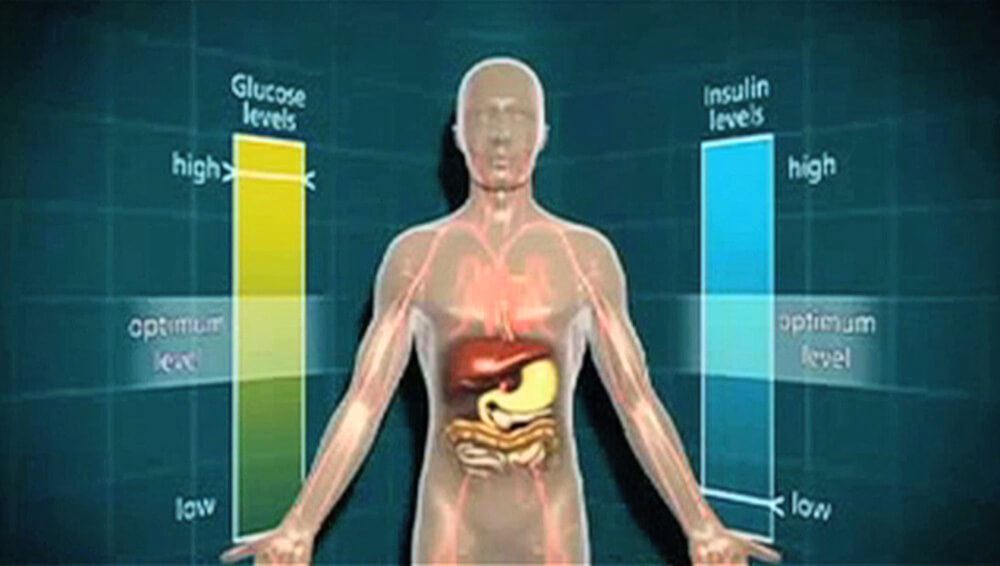Diabetes Education Transcript
Diabetes Education – Michael Polisky, MD Video
Opening screen with title “American Health Journal – TheDoctorShow.com” and an insert video of a doctor taking the blood pressure of a male patient.
Announcer: There are millions of Americans at risk for diabetes, a serious disease in which blood glucose levels are above normal. Diabetes has reached epidemic proportions in the past ten years. As we hear from…
V.O. visuals: Announcer is a male in a suit. He is introduced with the title “Kris Long – American Health Journal” in lower-third. He is in front of a news studio background with glass and wood panels and a large monitor with the title “Diabetes Education” displaying video of a crowded sidewalk of people walking by camera; a close-up of a healthcare worker with a dialysis tube; close-up of an overweight male and female walking on street; close-up of a weight scale
Announcer (V.O.): …Dr. Michael Polisky at Valley Presbyterian Hospital, he tells us about the two different types of diabetes and the importance of education.
V.O. visuals: Dr. Polisky, wearing a dress shirt and tie with a white coat, is being interviewed in a studio against an abstract background; exterior of hospital buildings; male in his office using a glucose monitor to check his sugar levels.
Michael Polisky, M.D.: Type 1 diabetes is actually a process whereby the immune system of the body targets and destroys the cells that produce insulin…
Visual: Close-up of Polisky in the studio. He is introduced with the title “Michael Polisky, MD – Valley Presbyterian Hospital” in lower-third.
Polisky (V.O.): … ultimately resulting in a complete deficiency of insulin producing cells, as opposed to Type 2 diabetes…
V.O. visuals: Graphic of the heart in the human body with a chart showing high levels of glucose and low levels of insulin (image below);

(V.O. visual continued): motion graphic illustration the letters “g” (for glucose) drifting by and unable to enter blood cells with key holes (image below).

Polisky: …where the body becomes increasingly insulin resistant and eventually…
Polisky (V.O.): …the ability to produce insulin cannot keep up with that insulin resistance and a deficiency gap opens up.
V.O. visual: Polisky behind desk in hospital unit looking through a patient chart and computer monitor.
Polisky: Type 1 diabetes needs to be treated with insulin replacement. There is no alternative…
Polisky (V.O.): …for insulin replacement and insulin is necessary for life. In Type 2 diabetes, efforts are made at closing that gap, reducing insulin resistance…
V.O. visuals: Close-up of hand holding a needle and insulin vial; overweight man in office using a glucose monitor to check his sugar levels; close-up of his hands and the monitor.
Polisky: …and increasing insulin production at the point where those two numbers are once again going to meet. And when they meet, blood glucose levels will be…
Visual: Title “Doctor Polisky discusses Type II Diabetes” appears in lower-third.
Polisky (V.O.): …normal or at least in the target range. Education is extremely important. In fact there is an adage that says that the person with diabetes who knows the most about their disease will live the longest.
V.O. visuals: Physician looking into the eye of a senior male patient; close-up of him examining the other eye; same physician lightly pressing on the patient’s neck.
Judy Kupersmith: I learned that eating correctly food is actually almost like a medicine. If we eat correctly and keep the high carbs down and…
Visual: Elderly overweight female patient being interviewed in front of abstract background. She is introduced with the title “Judy Kupersmith, Type II diabetic patient” in the lower-third.
Kupersmith (V.O.): …have a certain amount of exercise you can keep your diabetes in check. Otherwise it could be very problematic. Since I saw Polisky and he spoke to me, he’s been very helpful. So I feel like I’m on the right track and I’m very thankful for that.
V.O. visuals: Group of elderly women in a large room exercising; Kupersmith seated, talking with Polisky in the waiting room.
Announcer (V.O.): Dr. Polisky tells us that people can live successfully with diabetes.
V.O. visuals: Middle-aged male sitting in front of laptop at home using a glucose monitor to check his sugar levels; close-up of his hands and the monitor.
Polisky (V.O.): People can live successfully with diabetes long-term.
V.O. visuals: Female lab technician reviewing blood test results; close-up of blood vial
Polisky: In fact, I believe two years ago a patient celebrated a ninety-year history with Type 1 diabetes, at 95 years old, was diagnosed when he was four.
Polisky (V.O.): And people with Type 2 diabetes live successfully and don’t have to suffer complications of diabetes.
V.O. visuals: Polisky walking toward camera with a young, male patient as they talk.
Polisky: I think that’s one of the best things that we can say about this disease, is that in the world that we live in today, no one has to suffer from complications of diabetes…
Polisky (V.O.): …or die from diabetes. But with diabetes, there is a lot you have to know about and a lot you have to do on your own in order to take really good care of yourself.
V.O. visuals: Polisky and Kupersmith continuing their conversation in waiting room; several young women running on treadmills at a workout gym.
Polisky: So the learning about your disease process and how to manage it is really the most important thing in taking care of your diabetes, not just doing what your doctor tells you. But, learning about how to take care of yourself.
Visual: Polisky being interviewed in the studio.
End screen in black.

